Photographs: ThinkDigit.com Ruchir Mehta, ThinkDigit.com
Apple is finally launching the new iPad 2 in India and 11 other countries.. Japan would be getting it first on April 28 whereas India, Hong Kong, Israel, Korea, Macau, Malaysia, Philippines, Singapore, South Africa, Turkey and UAE will be getting it on April 29.
This news takes much of India by surprise as it took little over a month and only a small number of corporate affairs after its US launch for the iPad 2 to launch in Indian soil whereas the first generation of iPad took nine months before we could actually see the gadget in our own markets.
All this is more than a small blow for the new Indian iPad owners which was launched only a month ago, as they never suspected it to launch so soon.
Now what hurts most is the price. Unlike its US twin, iPad 2 in India is slightly expensive than the model it replaces. The first generation of iPad was launched at Rs 27,900 and was later dropped to Rs 24,500. The iPad 2 starts at Rs 29,500 and goes all the way up to Rs 46,900 which is a hefty sum to pay for a tablet but still, it is advised to rush to an Apple reseller near your place as soon as possible since the stocks won't last forever.
The following are the maximum retail prices of all the models including VAT:
- 16GB Wi-Fi: Rs 29,500
- 32GB Wi-Fi: Rs. 34,500
- 64GB Wi-Fi: Rs 39,500
- 16GB 3G + Wi-Fi: Rs 36,900
- 32GB 3G + Wi-Fi: Rs 41,900
- 64GB 3G + Wi-Fi: Rs 46,900
NEXT: Apple sues Samsung for ripping off iPad and iPhone; Samsung counters
Apple sues Samsung for ripping off iPad and iPhone; Samsung counters
Image: Apple versus SamsungApple has filed a lawsuit against Samsung, for "slavishly" copying iPhone and iPad designs in the Galaxy line of mobile phones and tablets. An Apple representative told Mobilized, "It's no coincidence that Samsung's latest products look a lot like the iPhone and iPad, from the shape of the hardware to the user interface and even the packaging. This kind of protusive copying is wrong, and we need to protect Apple's intellectual property when companies steal our ideas." Mobilized blogger Ina Fried reported that the lawsuit was filed in US District Court in North Carolina for infringing number of Apple patents and trademarks.
Apple has filed a detailed lawsuit, that contains loads of images as proof of how Samsung has copied Apple at several levels - from core technology to screen icons and form factor of the devices. Apple blames Samsung of copying even its packaging. Now this is indeed vague as Samsung, over the years, has been supplying Apple with microchips for the Apple products. However, in the last two years, Apple has been working on its own version of processors for iOS products.
Samsung's response:
Samsung's development of core technologies and strengthening our intellectual property portfolio are keys to our continued success. Samsung will respond actively to this legal action taken against us through appropriate legal measures to protect our intellectual property.
It's not the first time Apple has sued a smartphone maker. Last year, Apple has sued HTC, Nokia and Motorola for infringing Apple's patents and trademarks.
Samsung's reply suggests that the company will indeed counter sue Apple. Some analysts say this shows that Apple is getting concerned with the increasing popularity of Android OS based smartphones. Also a recent report has stated that Android will have about 50 percent of the mobile operating system market share worldwide by year-end 2012.
NEXT: Samsung Nexus S and Galaxy Pro in India
Samsung Nexus S and Galaxy Pro in India
Image: Samsung Nexus S and Galaxy ProA press conference in Chennai recently Samsung India announce the retail availability of the Samsung Google Nexus S in India, for Rs 29,590.
You can expect pricing to be significantly lower than the listed MRP, as we've said before about the Nexus S. Expect the phone to be available for around Rs 27,000.
All this of course is just weeks ahead of the Indian launch of the Samsung Galaxy S II, a dual-core smartphone with well-endowed specifications and numerous additional features that almost completely outpace the Samsung Google Nexus S in every way. Pricing of that device is expected to be around Rs 32,000 for the base model (16GB). So, if you can spare an extra five grand, and don't mind waiting a bit, then reconsider the Nexus S as your next smartphone investment.
This way, you'll also be getting Samsung's latest Super AMOLED Plus display technology, perhaps the most immediately noticeable difference between the two devices. For as we mentioned earlier, the Samsung Nexus S (i9023) in India bears Super LCD display technology, instead of the Super AMOLED that's available abroad.
Much more importantly, Samsung India also launched the Galaxy Pro B7510 at the press conference, revealing its Android QWERTY device that it had introduced globally back in the first week of March. Similar to the Motorola Charm, the Samsung Galaxy Pro sports Android 2.2 Froyo onboard instead of the Charm's 2.1, and, has a much speedier 800MHz processor.
The Galaxy Pro B7510 is priced exceptionally well at Rs 13,750 (MRP), and reports have come in of it being priced as low as Rs 12,300 on the street. Its specifications include a 2.8-inch capacitive touchscreen with a resolution of 320x240 pixels, 512MB built-in storage expandable to 32GB with a microSD card (2GB card bundled), 3G connectivity (HSDPA 7.2Mbps), a 3.15MP autofocus camera, ThinkFree document viewer, Wi-Fi b/g/n connectivity with Wi-Fi hotspot support, Bluetooth 2.1 with A2DP, GPS with A-GPS support, stereo FM radio with RDS, and, a 1350 mAh battery that is rated to provide up to 610 hours of standby time (2G), and 11 solid hours of talk time (2G).
NEXT: Google Chrome 11 supports HTML speech input
Google Chrome 11 supports HTML speech input
Image: Google Chrome 11Google Chrome 11 might not have a big list of features to boast of, over the significant update that was Google Chrome 10, but it does bring one very important feature to the web browser. With this latest release Google Chrome now supports speech input through HTML.
This may not seem like a big deal to many, however fact is that despite the web being an important innovation in making data available to people all across the world, access to the internet for those with disabilities is still quite limited. They are cut off from a majority of this brilliant innovation in communication.
Speech input is a great way to enable people to interact with the web in ways they couldn't before, while improving accessibility for those with disabilities that prevent them from using computers via traditional means.
Google Translate also boasts of this feature, allowing one to input text in a known language merely by speaking it, and then translating it to any one of the supported languages. The translation can even be spoken aloud by the browser.
Google Chrome 11 also comes with an updated browser icon that is a simplified / 2D version of the previous Google Chrome icon.
NEXT: Kaspersky's affordable Mobile Security Solutions
Kaspersky's affordable Mobile Security Solutions
Image: Kaspersky's Mobile Security SolutionsKaspersky Lab, one of the most reputed computer security firms in the world, has released the 2011 version of its Mobile Security Solutions, with different editions for consumers and enterprises. It supports a variety of mobile smartphone platforms, including Symbian, Windows Mobile, BlackBerry, and Android.
The consumer version is called Kaspersky Mobile Security 9.0 (KMS 9), and costs just Rs 599, available at leading retails stores across the country. KMS 9 protects against malware, network attacks and SMS spam, and, also safeguards the data with a new Privacy Protection feature, which allows users to hide information about contacts that they want to keep confidential. Unwanted SMS or calls can also be blocked by assigning contacts to white and blacklists.
Kaspersky Mobile Security 9 will also help in case your device is stolen or lost, by locating it via GPS/cell-phone towers/Wi-Fi networks. It can also remotely block or wipe confidential information. Another interesting security feature will also notify you of the new number if a new SIM is placed in your lost/stolen device. KMS 9 also has a Parental Control module, which can allow parents to restrict the numbers their children can call, and, allow them to control who calls as well.
NEXT: HTC Sensation to arrive in India
HTC Sensation to arrive in India
Image: HTC SensationThe HTC Sensation was officially introduced to the world at a press conference in London recently, and now, HTC has confirmed the device will be coming to Asian markets including India by Q2, i.e., sometime in May or June.
HTC has also announced via its Twitter feed that the new enhanced UI introduced with the HTC Sensation, known as HTC Sense 3.0, will only be supported by future devices, and, the current generation of HTC phones will not be upgraded to this. This is apparently due to hardware requirements of the new UI, and if the HTC Sensation is the minimum specification for it, these requirements are quite stellar.
The HTC Sensation has a 1.2GHz dual-core processor, coupled with the Adreno 220 GPU, part of Qualcomm's latest MSM8260 Snapdragon chipset. HTC Sense 3.0 UI is also supported by the HTC Flyer, which is no slouch either, featuring a 1.5GHz processor. The HTC EVO 3D, bearing a similar 1.2GHz processor (MSM8660) as the HTC Sensation, will also support it.
NEXT: Samsung Galaxy S II vs HTC Sensation
Samsung Galaxy S II vs HTC Sensation
Image: Samsung Galaxy S II vs HTC SensationSparks are flying and the heat is on, with two supremely-endowed phones from leading manufacturers on the verge of launching in India. Let us compare them head-to-head, and decide the favourite ahead of the showdown The Samsung Galaxy S2, expected in early May, will release before the HTC Sensation, which for now is expected sometime in May or June.
Both are Android 2.3 Gingerbread devices, with HTC Sense 3.0 UI for the Sensation and Touch Wiz 4.0 UI for the S2. The Samsung Galaxy S II and the HTC Sensation are powered by 1.2 GHz dual-core processors, and feature 1GB and 768 MB RAM respectively. The HTC Sensation has a higher resolution 4.3-inch screen at 540x960 pixels, while Galaxy S II has a 480x800 resolution 4.3-inch screen.
Galaxy S2 comes with 16GB and 32GB built-in storage, whereas the HTC Sensation only offers 1GB -- even if it is expandable to 32GB via microSD, and has a 8GB card bundled. Considering the display, the Samsung Galaxy S II has Super AMOLED Plus tech compared to the HTC Sensation's Super LCD, a battle that Samsung might just win on fight night.
Both devices have an 8MP rear camera, capable of 1080p HD video recording, with the Samsung Galaxy S II bearing a single LED flash and a 2MP front-facing camera, and the HTC Sensation bearing a dual LED flash and a 1.3MP webcam upfront. The HTC Sensation also records stereo sound in addition.
The powerful Exynos 1.2GHz dual-core processor and Mali 400 GPU of the Galaxy S2 runs on a 1650 mAh battery, while HTC Sensation's Qualcomm MSM8260 1.2GHz dual-core and Adreno 220 GPU runs on a 1520 mAh battery. The battle for battery life will of course, depend on just how well optimized the UI and OS are, how much power the respective displays consume, and a hundred other small factors. HTC has rated the Sensation's battery to deliver up to 400 hours of 2G standby time, and roughly 6.5 hours of talktime on 3G. Samsung has not released these figures for the S II.
The Galaxy S II is a much lighter phone than the Sensation, with weight of around 116 grams, compared to a relatively hefty 148 grams. The Galaxy S II is also a super-slim offering with a width of just 8.49 mm, compared to the HTC Sensation's relatively obese 11.3 mm thickness.
As things stand, the Galaxy S 2 seems like the favourite in a rather evenly matched fight of 1.2GHz dual-core CPU powered phones with 4.3-inch displays. Features like document editing abilities, and USB on-the-go are also in its favour. Pricing will be an important factor, and for now, Samsung is expected to price the Galaxy S II at the lower end of the Rs. 30,000-35,000 segment, and HTC, the higher end. Until the first round begins, all eyes are on HTC's corner.
NEXT: Samsung's 2GHz dual-core smartphone
Samsung's 2GHz dual-core smartphone
Image: Samsung's 2GHz dual-core smartphoneWhile the world is still looking forward to the first 1.2GHz dual-core phone to launch with the Samsung Galaxy S II, it seems Samsung is hard at work designing a 2GHz dual-core phone for 2012.
The rumour was apparently sourced from a high-ranking Samsung executive, who said the upcoming smartphone would have "data processing capacities of a regular PC". While nothing has been confirmed, it is more than probable than Samsung would be using a new version of its ARM-based Exynos processors.
As always, the clockspeed is not everything, and a truly polished and optimized UI experience is a must for the advantages of a 2GHz dual-core processor to be apparent, something the world's first dual-core phone,the LG Optimus 2X, didn't do very well..
For now, we simply can't imagine mobile applications, whether software or hardware, to use 1.2GHz dual-core processors completely, and so, it's not inconceivable that at least in the near future, a 2GHz dual-core phone is complete overkill for all practical purposes.
NEXT: Microsoft opens Office 365 as a free-for-all public beta
Microsoft opens Office 365 as a free-for-all public beta
Image: Microsoft opens Office 365 as a free-for-all public betaMicrosoft has announced that its online productivity suite, Office 365, is now available for anyone to try out, as a public beta. The suite will be accessible in 38 countries across the world, and in 17 languages. Apart from the usual Microsoft Office programs like Word and PowerPoint, users also have access to Microsoft Exchange, SharePoint, and Microsoft Lync, for real-time collaboration. Protection comes via the ForeFront security client, and Microsoft promises 99.9% uptime for the service.
The full release of the product is expected later this year. Once that happens, Microsoft will charge different rates based on the size of the company using it.
SMBs with less than 25 employees get it cheap, at $6 a month per person, getting them Office Web Apps, as well as Microsoft Exchange and SharePoint.
Larger companies have more plans to choose from, each with different features, starting from $10 per month per person.
The launch of Office 365's beta is accompanied with a beta of Office 365 Marketplace, which helps users of Office 365 find a variety of apps and services from Microsoft and its partners. Log on to Office 365 here.
NEXT: Fresh Windows 8 screenshots show brand new Advanced Task Manager
Fresh Windows 8 screenshots show brand new Advanced Task Manager
Image: Fresh Windows 8 screenshotsThe latest builds of Windows 8 in the hands of developers has resulted in more leaked screenshots, this time showing off the new Advanced Task Manager of the OS. New and improved, the we have two different screenshots displaying two different types of Task Manager. Some believe one is the touch edition, and the other is the standard.
Microsoft is obviously still experimenting with different types of interface for the app, and any of the below versions, a combination of them, or something absolutely new, might be what actually releases with the full version of Windows 8 in 2012.
The first screenshot is the dashboard of the Advanced Task Manager, showing basic CPU, disk load, memory, and network information graphically. The second screenshot is another version of the Task Manager, seemingly touch-friendly, showing a list of programs, users, and start up items. Check them out below:
NEXT: HTC Sensation ROM gets leaked
HTC Sensation ROM gets leaked
Image: HTC Sensation ROMThat was fast! A few days after the world gets to hear about the HTC Sensation and its HTC Sense 3.0 UI, its ROM gets leaked out in the wild for one and all to use. Hosted by 911 HTC, you can find the HTC Sensation's ROM here, listed as the HTC Pyramid.
This of course, is just a test version, and as always, you are not recommended to try and boot this ROM on your device, at least, without serious precautions.
Just wait a bit, and the gurus at XDA Developers and other such mobile developer sites will create fully functional ROMs for a host of mobile phones, tablets, and other devices, including yours!
NEXT: Nokia C2-06 Touch and Type dual SIM slider expected soon
Nokia C2-06 Touch and Type dual SIM slider expected soon
Image: Nokia C2-06 Touch and Type dual SIM sliderPhotos of a Nokia slider phone have been doing the rounds, what looks to be the Nokia C2-06 Touch and Type phone, running Symbian Series 40 operating system. The slider phone in the below image definitely looks like it was meant for India, but for now, there is no word as to when it will launch or how much it will cost.
The Nokia C2-06 is reportedly a dual SIM phone, packing a 2MP camera, a resistive QVGA touchscreen, a 3.5 mm audio jack, Bluetooth, and a microUSB port. No Wi-Fi or 3G connectivity is expected. Not much else is known at this time, but we'll keep you posted.
NEXT: Olive launches its low-cost Android phone
Olive launches its low-cost Android phone
Image: Olive low-cost Android phoneThe OliveFluid has a 3.5-inch capacitive touchscreen with a 320x480 resolution, which is on the lower side of pixel density, but not too bad. It has a 468MHz processor however, with just 256MB of RAM and ROM. Relevantly (for a phone running Android Eclair), the OliveFluid has just 256MB built-in storage, though it is expandable to 32GB via microSD.
All is not all bad however, and the OliveFluid redeems itself slightly by offering 3G, Wi-Fi, Bluetooth, GPS, and A-GPS connectivity. It has a 3MP camera onboard, as well as a 3.5 mm audio jack, digital compass, gravity sensor, and proximity sensor. Its 1,300 mAh battery is surprisingly rated to deliver just 4 hours of talk time, and 192 hours of standby time.
Finally, with perhaps the best way to offset the out-of-date hardware, Olive Telecom has also included a content bundle with the Olive Fluid a free six month subscription to Zenga TV.
Olive Telecom has launched a new low-cost Android phone in the market, the OliveFluid V-W1. Priced at Rs. 10,990, the OliveFluid is an Android 2.1 handset, something unexpected after Olive brought the first Gingerbread phone in the Indian market, with the OliveSmart V-S300.
However, once we take a look at the specifications, we begin to see why the software is not up to date, and begin to wonder just what Olive was thinking by bringing such an offering into the bustling low-cost Android market, even at a sub-Rs. 10K price. Nothing really stands out about it.

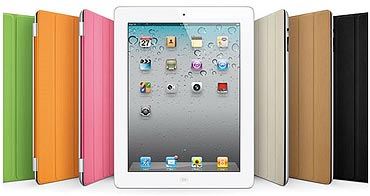

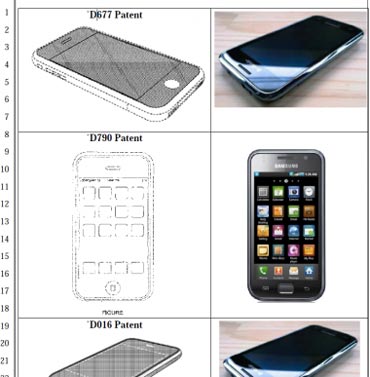
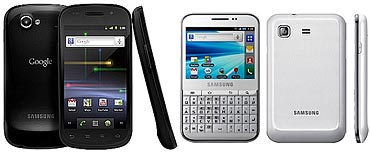

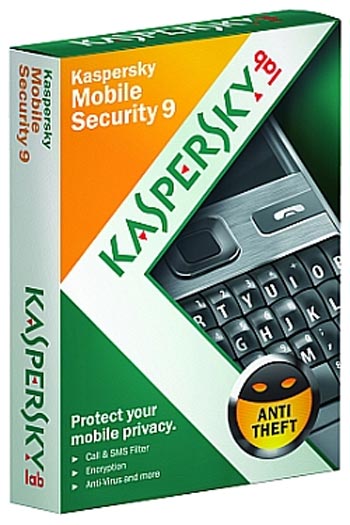
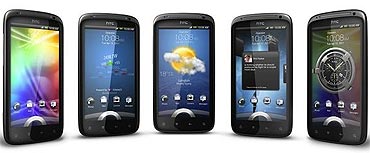
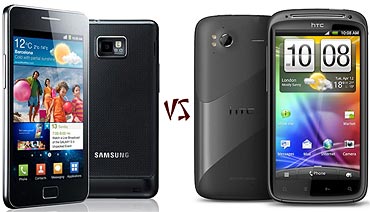
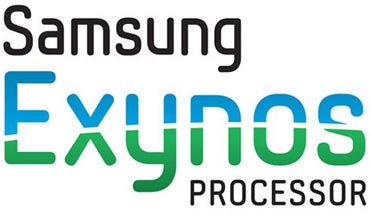
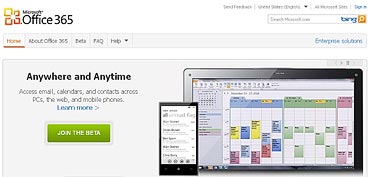

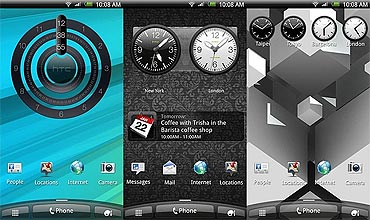
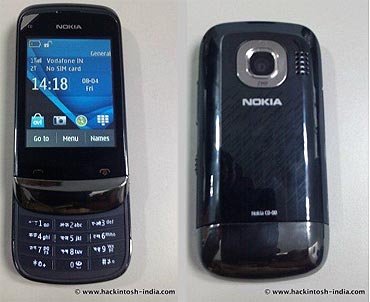

Comment
article